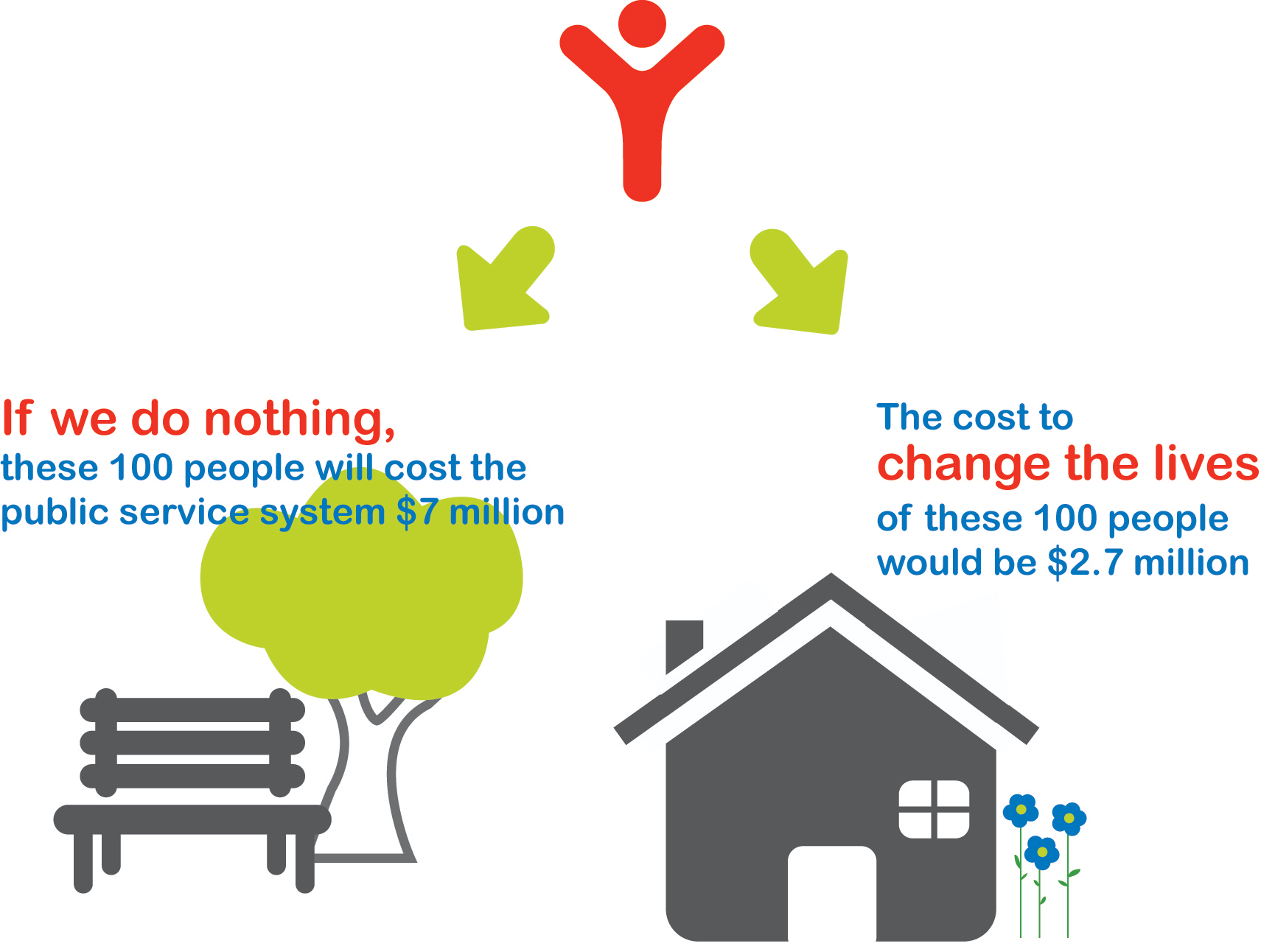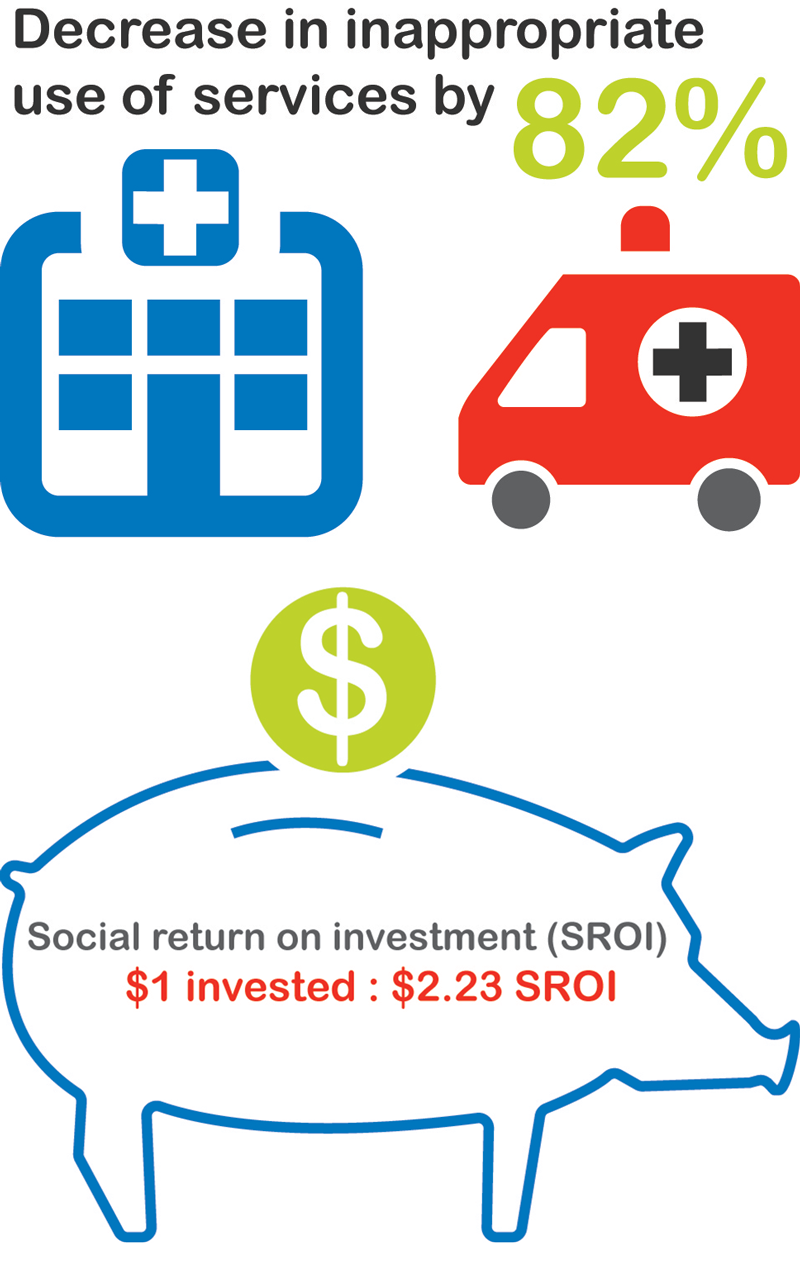This week’s infographic, which appeared in the United Way Saskatoon & Area report, takes a look at the successes of the Journey Home program in Saskatoon. The program focuses on providing housing to Saskatoon’s most vulnerable citizens, many of whom have experienced chronic homelessness.

The Journey Home program utilizes the Housing First approach to ending homelessness. The term Housing First is used to refer to programs that combine immediate access to permanent housing with wrap-around supports. Immediate access to permanent housing means no housing readiness requirements, in contrast to ‘treatment first’ approaches. The presence of supports is an essential component of any Housing First approach. Housing First programs, including Journey Home, typically involve three kinds of supports:
1) Housing supports help people obtain and maintain permanent housing;
2) Clinical supports designed to enhance physical and mental health of the client; and
3) Complementary supports intended to help individuals and families improve their quality of life, integrate into communities and potentially achieve self-sufficiency.
 When people have a home, they spend less time in hospitals, police custody and shelters. The Year 1 report for the project states that Journey Home showed a social return on investment of $2.23 dollars for every $1 invested. Inappropriate usage of public system services - like emergency room visits, ambulances rides, police detention and even incarceration - showed an 82% drop post Housing First.
When people have a home, they spend less time in hospitals, police custody and shelters. The Year 1 report for the project states that Journey Home showed a social return on investment of $2.23 dollars for every $1 invested. Inappropriate usage of public system services - like emergency room visits, ambulances rides, police detention and even incarceration - showed an 82% drop post Housing First.
United Way hopes to expand on the Journey Home program. They have a goal to create sustainable housing for the 100 most vulnerable, chronically homeless people in their community over the next three years.
Are there other examples of Housing First initiatives?
Absolutely, there are numerous examples of successful applications of Housing First across Canada. These applications are tailored to the needs of local communities and populations. In British Columbia, the Streets to Homes project in Victoria demonstrates how large-city programs can be adapted to meet the needs of smaller communities. In Alberta, Nikhik Housing First/Homeward Trust highlights what agencies can do to integrate Aboriginal culture into a program. In Ontario, the Transitions to Home project in Hamilton provides a great example of how partnerships with police services can help identify individuals with high needs.
The At Home/Chez Soi study, conducted by the Mental Health Commission of Canada examined Housing First as a means for ending homelessness for individuals living with mental illness. The project followed over 2,000 participants over a two-year period across Canada. Demonstration sites included Vancouver, Winnipeg, Toronto, Montréal and Moncton. Throughout the course of the trial, Housing First was shown to be a “cost-efficient, effective and humane solution to homelessness in Canada”
Housing First trials have also been carried out in the United States, as well as Europe. Today, Housing First is recognized as a best practice for agencies and governments across the world in the fight against chronic homelessness.
*This blog post has been updated to reflect United Way of Saskatoon & Area's latest report findings. Click here to see their previous findings.

